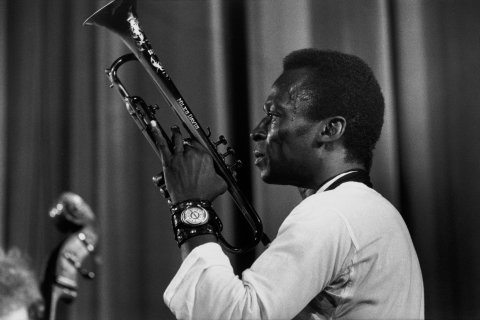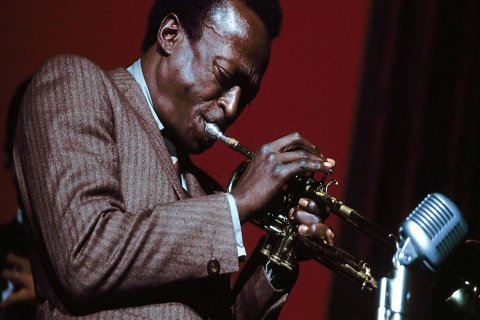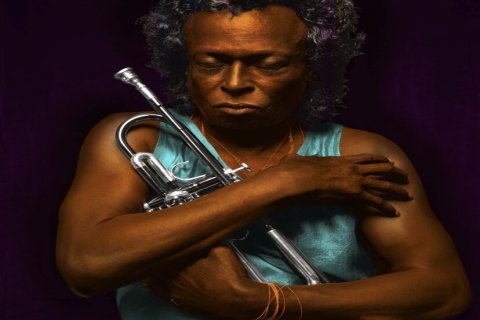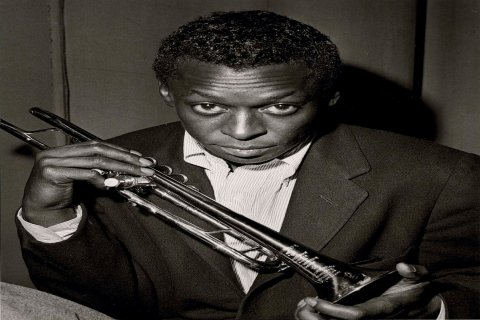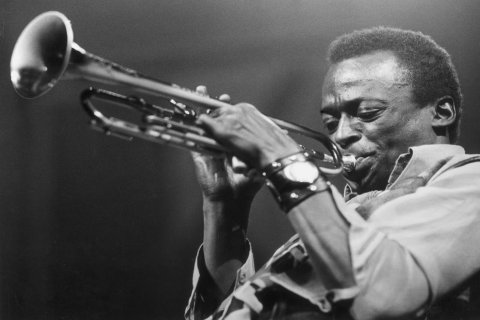Miles Davis

Miles Davis: The Legendary Jazz Trumpeter and Bandleader
Miles Davis (May 26, 1926 – September 28, 1991) was an American jazz trumpeter, bandleader, and composer. He is considered one of the most influential figures in the history of jazz and twentieth-century music. Davis was known for his innovative approach to harmony, melody, and rhythm, and for his ability to fuse disparate musical styles into new and exciting forms. He was also a master of improvisation, and his solos were often characterized by their emotional intensity and technical virtuosity.
Early Life and Career
Davis was born in Alton, Illinois, and grew up in East St. Louis. He began playing the trumpet at the age of 13, and by the time he was 16, he was playing professionally with local bands. In 1944, Davis moved to New York City to study at the Juilliard School of Music. However, he soon dropped out of Juilliard and began playing with various jazz groups in the city.
In 1945, Davis joined the Charlie Parker Quintet, one of the most important jazz groups of the bebop era. With Parker, Davis developed his own unique style of playing, which was characterized by its use of chromaticism, extended harmonies, and complex rhythms. In 1949, Davis formed his own group, the Miles Davis Quintet, which featured some of the most talented jazz musicians of the time, including John Coltrane, Red Garland, Paul Chambers, and Philly Joe Jones.
The 1950s: A Period of Innovation
The 1950s was a period of great innovation for Davis. In 1955, he released his album "Birth of the Cool," which featured a cool, understated sound that was a departure from the more aggressive bebop style of the time. In 1957, Davis released "Sketches of Spain," which was inspired by Spanish music. In 1959, he released "Kind of Blue," which is considered one of the greatest jazz albums of all time. "Kind of Blue" featured a modal approach to improvisation, which allowed the musicians to explore new and uncharted territory.
The 1960s and 1970s: Experimentation and Fusion
In the 1960s and 1970s, Davis continued to experiment with new musical styles. He began to incorporate elements of rock, funk, and soul into his music, and he also began to use electric instruments. In 1969, Davis released the album "Bitches Brew," which was a groundbreaking fusion of jazz, rock, and funk. "Bitches Brew" was a commercial success, and it helped to introduce jazz to a wider audience.
The 1980s and 1990s: A Return to Acoustic Jazz
In the 1980s and 1990s, Davis returned to acoustic jazz. He released a number of critically acclaimed albums, including "You're Under Arrest" (1985), "Tutu" (1986), and "Amandla" (1989). Davis also toured extensively during this period, and he continued to perform until his death in 1991.
Legacy
Miles Davis is considered one of the most important and influential jazz musicians of all time. He was a master of improvisation, and his solos were often characterized by their emotional intensity and technical virtuosity. Davis was also a gifted bandleader, and he was able to bring out the best in his musicians. His music continues to be enjoyed by people all over the world, and he is considered one of the greatest jazz musicians of all time.
Interesting Facts about Miles Davis
- Davis was a heavy smoker, and he smoked cigarettes throughout his life. He died of a stroke in 1991 at the age of 65.
- Davis was a talented painter, and he created a number of abstract paintings throughout his life.
- Davis was a fashion icon, and he was known for his stylish clothes and his trademark sunglasses.
- Davis was a controversial figure, and he was often outspoken about his views on race, politics, and the music industry.
- Davis was a Grammy Award winner, and he was inducted into the Rock and Roll Hall of Fame in 2006.

